Lent 2025:
The ART of Compassion
Introduction
Lent is a season of return.
. . . an invitation to experience God’s tender compassion.
Sometimes a work of art or a sacred image/icon can draw us deeper into conversation with God. Rembrandt’s Return of the Prodigal Son painting (above) captures the tender compassion of the father upon the return of his child. As we engage our sense of sight, we might enter into the scene and interact with imagination, asking questions, identifying memories and feelings that may arise, and conversing with God. This is an ancient form of prayer called Visio Divina, or “divine seeing.”
Each week during the retreat, we hope to offer you various images that might facilitate the practice of Visio Divina. This is completely optional! Moments of Grace & Prayer retreats are always “self-directed” and “personal,” meaning that each retreatant will experience the retreat in a unique way, following the Spirit’s lead. These images are simply one offering on the “buffet table” of this retreat.
The word compassion–from the Latin “suffer with”–is usually defined as a sympathetic concern for others’ distress. More than simply concern, it implies acting to alleviate the suffering of others. Like the Good Samaritan who not only saw a person suffering but provided hands-on care for them.
In ancient cultures of the Bible, strong emotion was considered to have originated in a person’s inmost part—their “guts!” In fact, the word for compassion in Greek splagchnizomai (in the New Testament) was the same word for bowels or guts. When we read that Jesus was moved to compassion for the blind, sick, lost, and hungry, it means that he felt pity deeply, from “his guts.” Similarly, in the Old Testament, the Hebrew word for compassion derived from the word for womb! When God revealed himself to Moses at the burning bush, the very first word used to self-describe was “compassionate” – “I am compassionate and gracious” (Exodus 34:6). In other words, God said, “I feel womb-love for you.” God’s compassion for us is like that of a mother whose presence consoles, protects, and nurtures.
Click here to watch a short video from the Bible Project about God’s motherly compassion toward us.
Visio Divina, or “divine seeing,” is a way of praying, by contemplating an image and experiencing the presence of God through it. We simply ask God for the grace to see his goodness, truth, beauty, that may be conveyed through the image. There is no single absolute way to practice Visio Divina. Start by asking for the grace to receive, to understand anew. Spend time in silence and stillness as you take in the image. Notice colors, shapes, lighting, patterns. We are focused on art but any object in nature can also draw us into God’s presence.
Perhaps you imagine yourself in the image, taking the role of one of the items/persons depicted, or something different. Then using your imagination, consider all your senses: what do you see, hear, smell, feel, taste?
You might follow a multi-step approach: 1) spend time looking at the details of the image (colors, people, things) and consider what words come to mind or what emotions arise; 2) taking a second look, deeper, imagine yourself in the image, where are you located, what do you see from that perspective?; 3) then respond with prayer, express your feelings or memories with movement or writing or singing; 4) finally, relax and rest and return your prayer to God, even if it’s wordless.
ART of Compassion
Images
[Click image to enlarge and view Visio Divina prompts]
Week 1: God’s Compassion
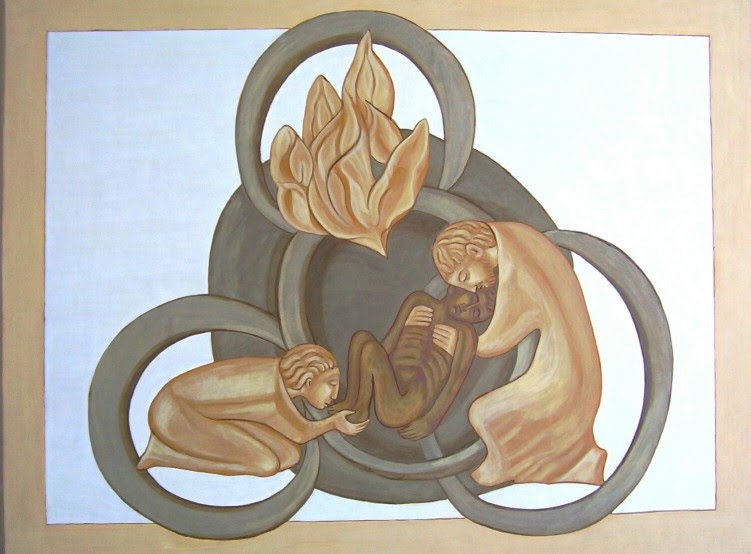
(Sr. Caritas Müller, OP, 2007)

(Francis De Erdely, 1950)

(Rembrandt, 1632)
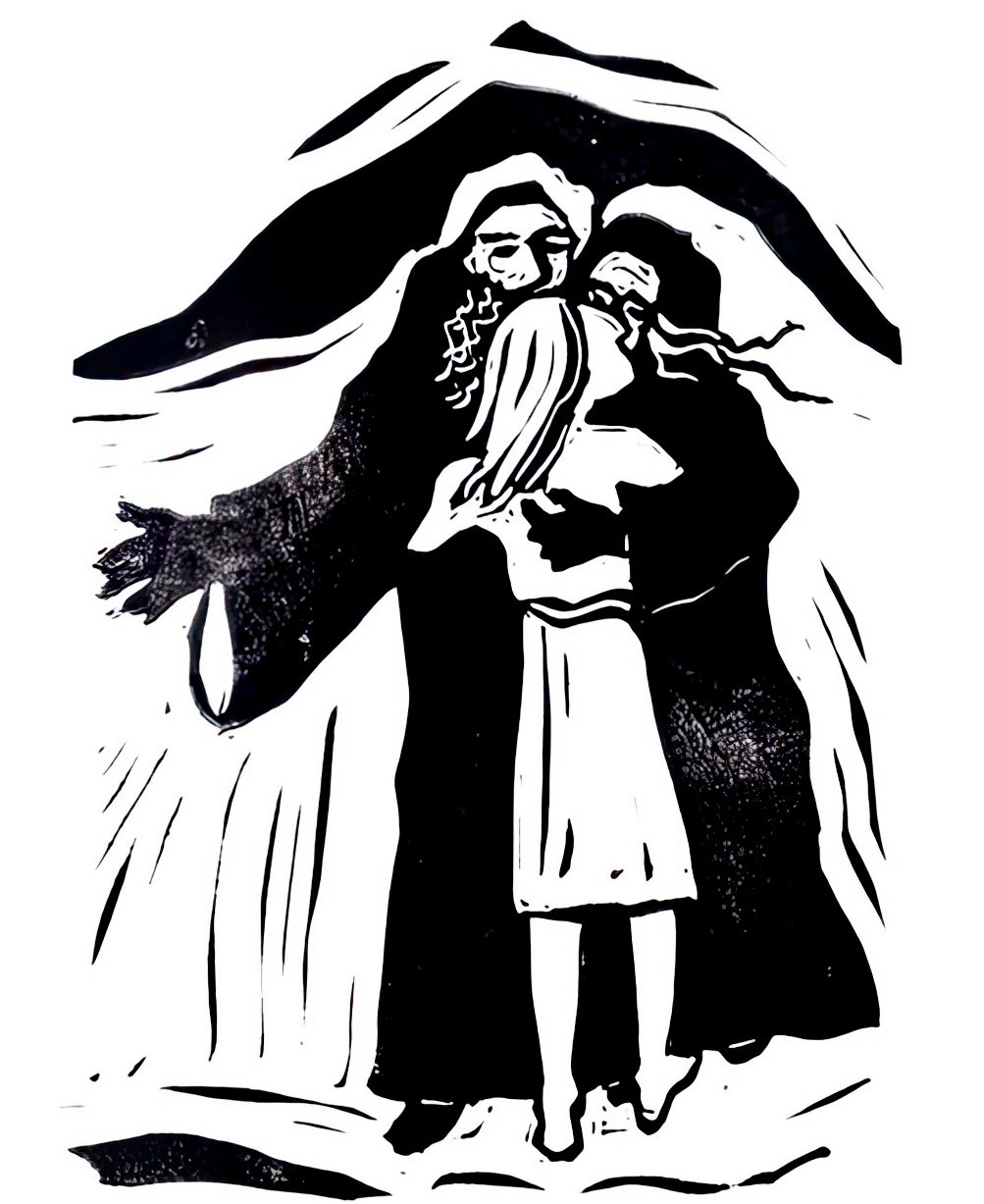
(Rev. Cara B. Hochhalter, 2019)
God is “compassionate and gracious” and “abounding in love and faithfulness.” Compassion is the first word God uses to self-describe. (Exodus 34:6)
God’s compassions never fail. They are new every morning. Great is his faithfulness. (Lamentations 3:22-23)
Though the mountains be shaken and the hills be removed,
yet my unfailing love for you will not be shaken nor my covenant of peace be removed,” says the Lord, who has compassion on you. (Isaiah 54:10)
They will neither hunger nor thirst, nor will the desert heat or the sun beat down on them. He who has compassion on them will guide them and lead them beside springs of water. (Isaiah 49:10)
The Prodigal Son story is found in Luke 15:11-32. “But while he was still a long way off, his father saw him and was filled with compassion for him; he ran to his son, threw his arms around him and kissed him.” (verse 20)
Week 2: Jesus feels Compassion
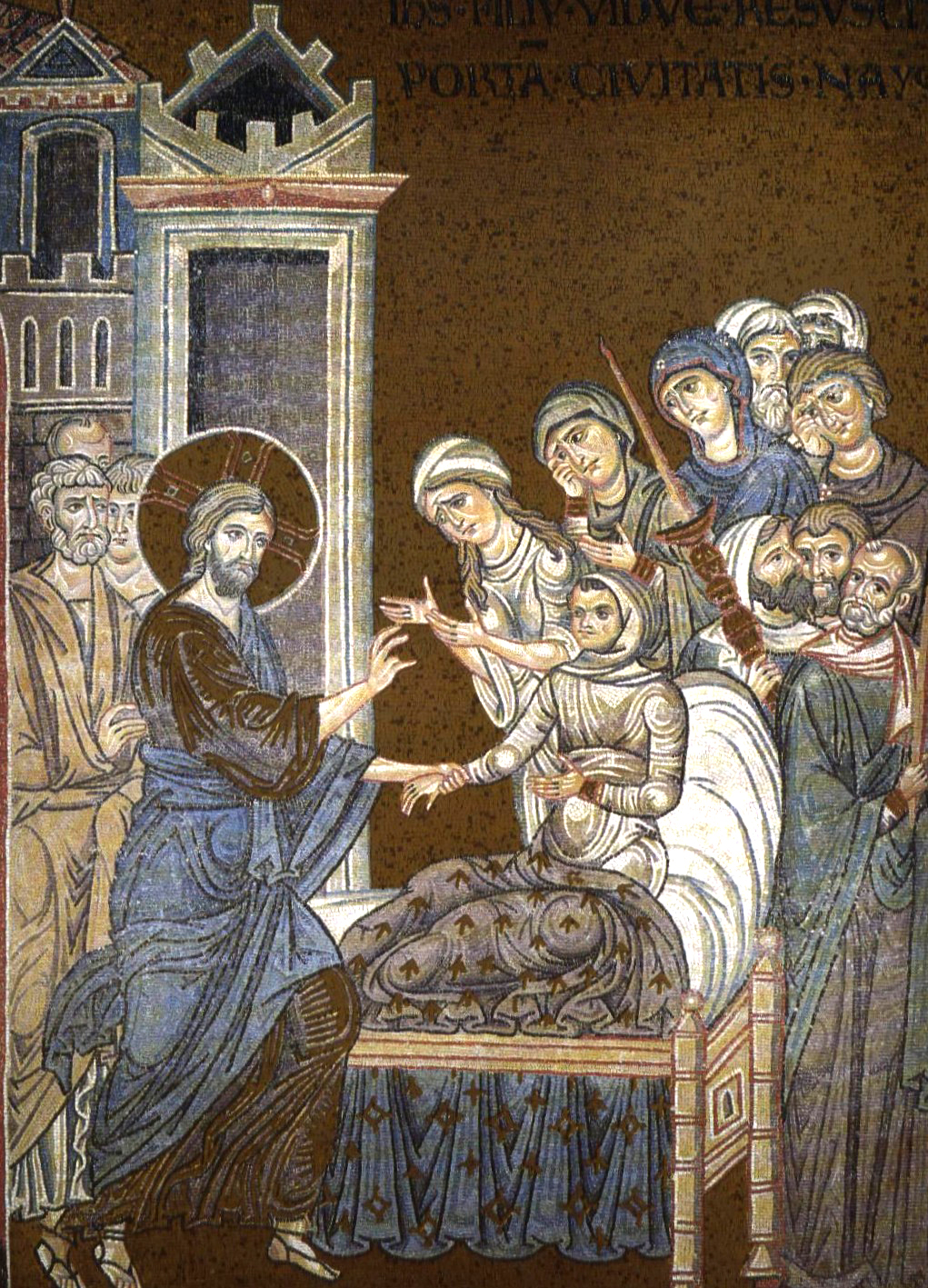
(12th century mosaic)

(12th century mosaic)
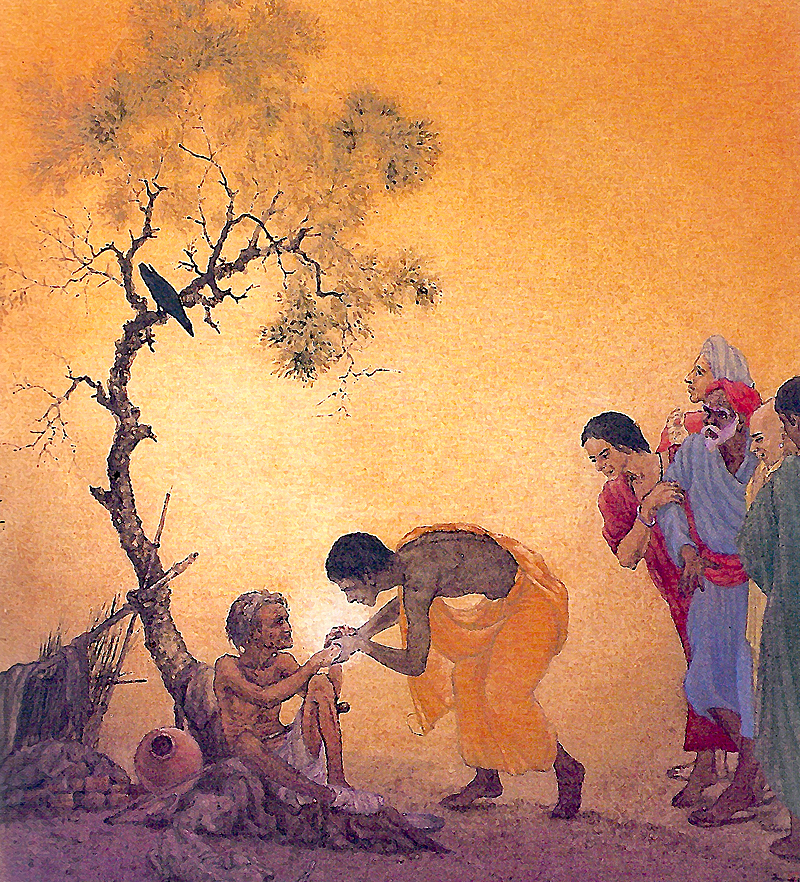
(Frank Wesley, ca1950)
Jesus went through all the towns and villages, teaching in their synagogues, proclaiming the good news of the kingdom and healing every disease and sickness. When he saw the crowds, he had compassion on them, because they were harassed and helpless, like sheep without a shepherd.(Matthew 9:36)
When Jesus heard what had happened [John the Baptist’s murder], he withdrew by boat privately to a solitary place. Hearing of this, the crowds followed him on foot from the towns. When Jesus landed and saw a large crowd, he had compassion on them and healed their sick. (Matthew 14:13-14)
Jesus called his disciples to him and said, “I have compassion for these people; they have already been with me three days and have nothing to eat. I do not want to send them away hungry, or they may collapse on the way. (Matthew 15:32)
As Jesus and his disciples were leaving Jericho, a large crowd followed him. Two blind men were sitting by the roadside, and when they heard that Jesus was going by, they shouted, “Lord, Son of David, have mercy on us!” The crowd rebuked them and told them to be quiet, but they shouted all the louder, “Lord, Son of David, have mercy on us!” Jesus stopped and called them. “What do you want me to do for you?” he asked. “Lord,” they answered, “we want our sight.” Jesus had compassion on them and touched their eyes. Immediately they received their sight and followed him. (Matthew 20:29-34)
A man with a skin disease came to Jesus, begging him, and said to him, “If you are willing, you can make me clean.” Moved with compassion, Jesus stretched out his hand and touched him and said to him, “I am willing. Be made clean!” Immediately the skin disease left him, and he was made clean. (Mark 1:40-41)
Week 3: Compassion toward others
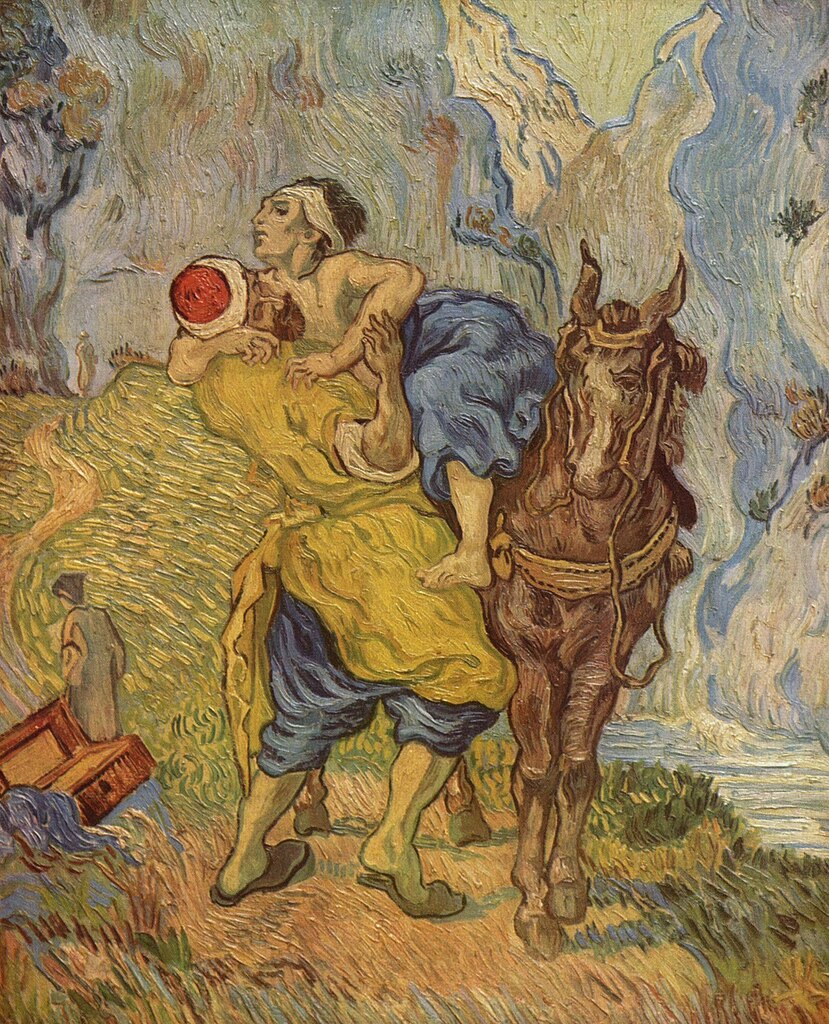
(Vincent van Gogh, 1890)
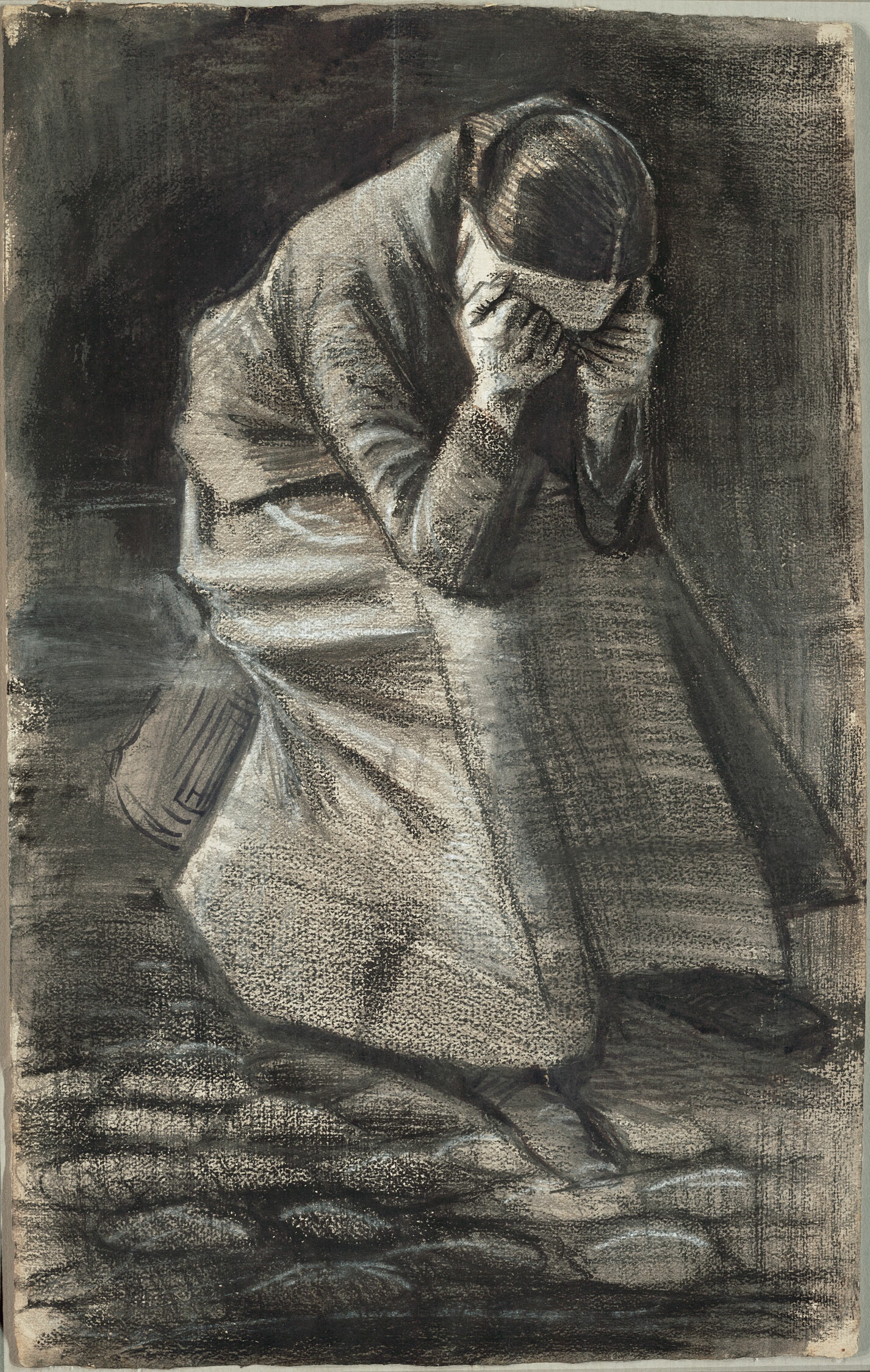
(Vincent van Gogh, 1883)
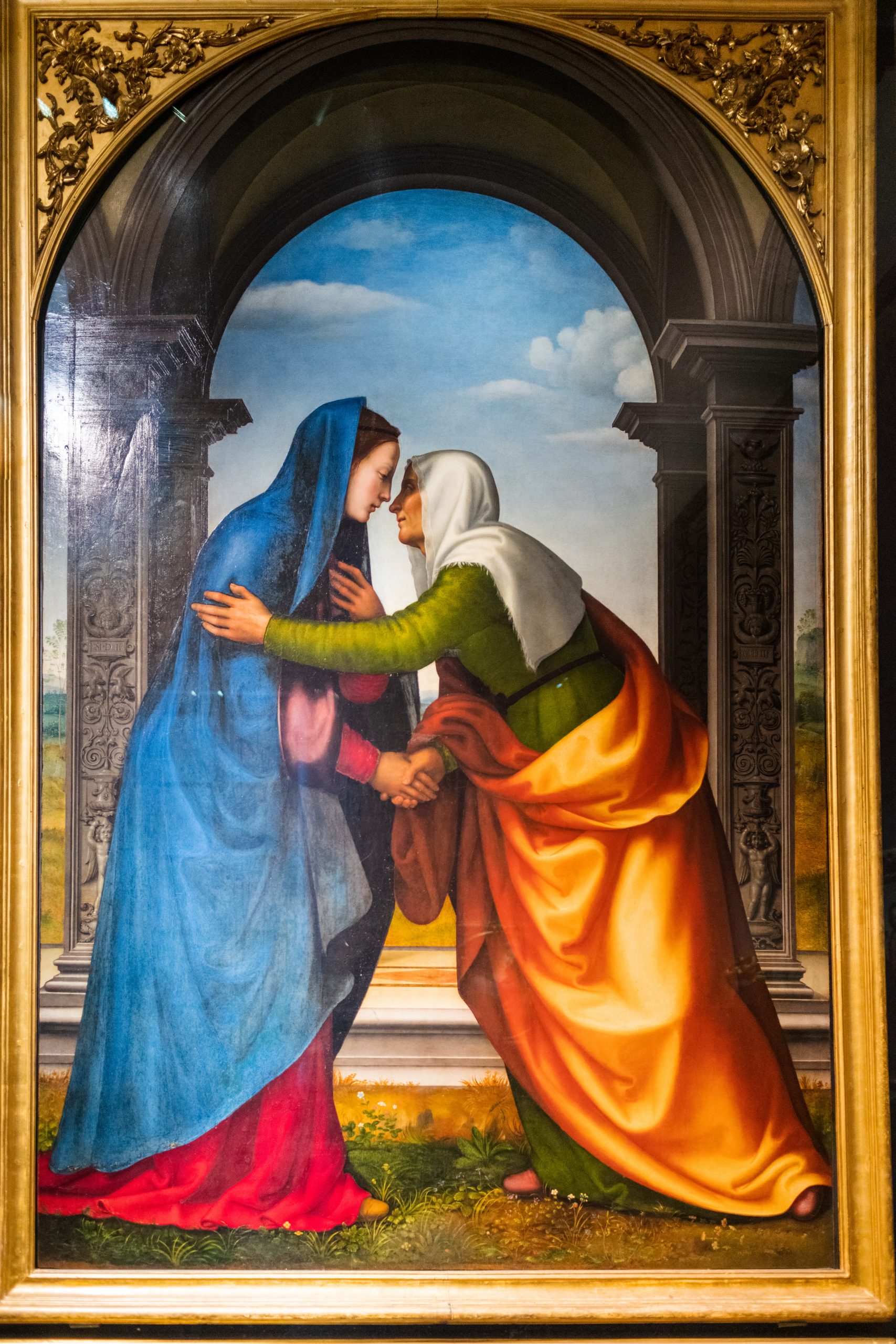
(Albertinelli, 1503)
Week 4: Compassion for Jesus
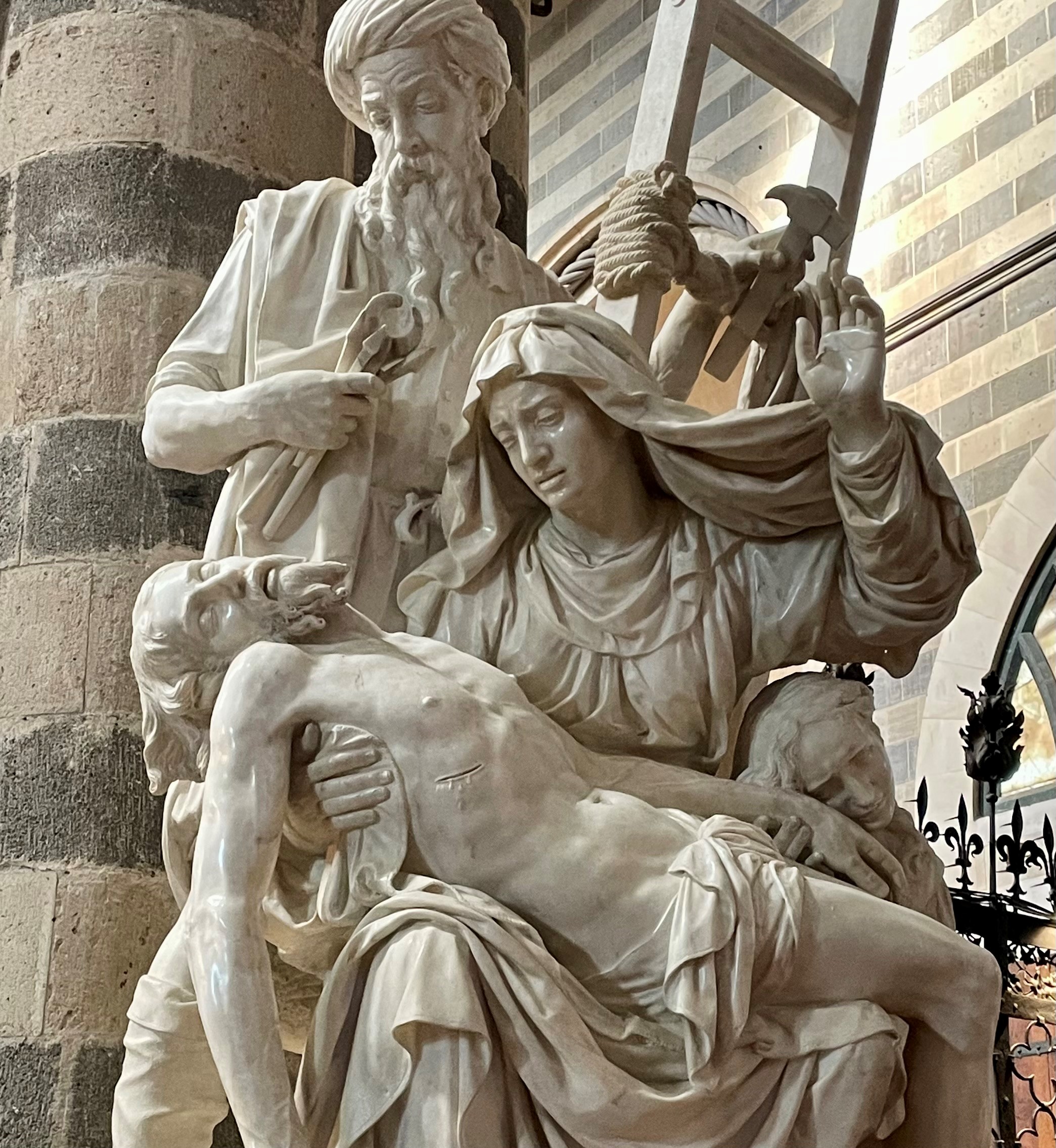
By Ippolito Scalza, 1579, Orvieto, Italy
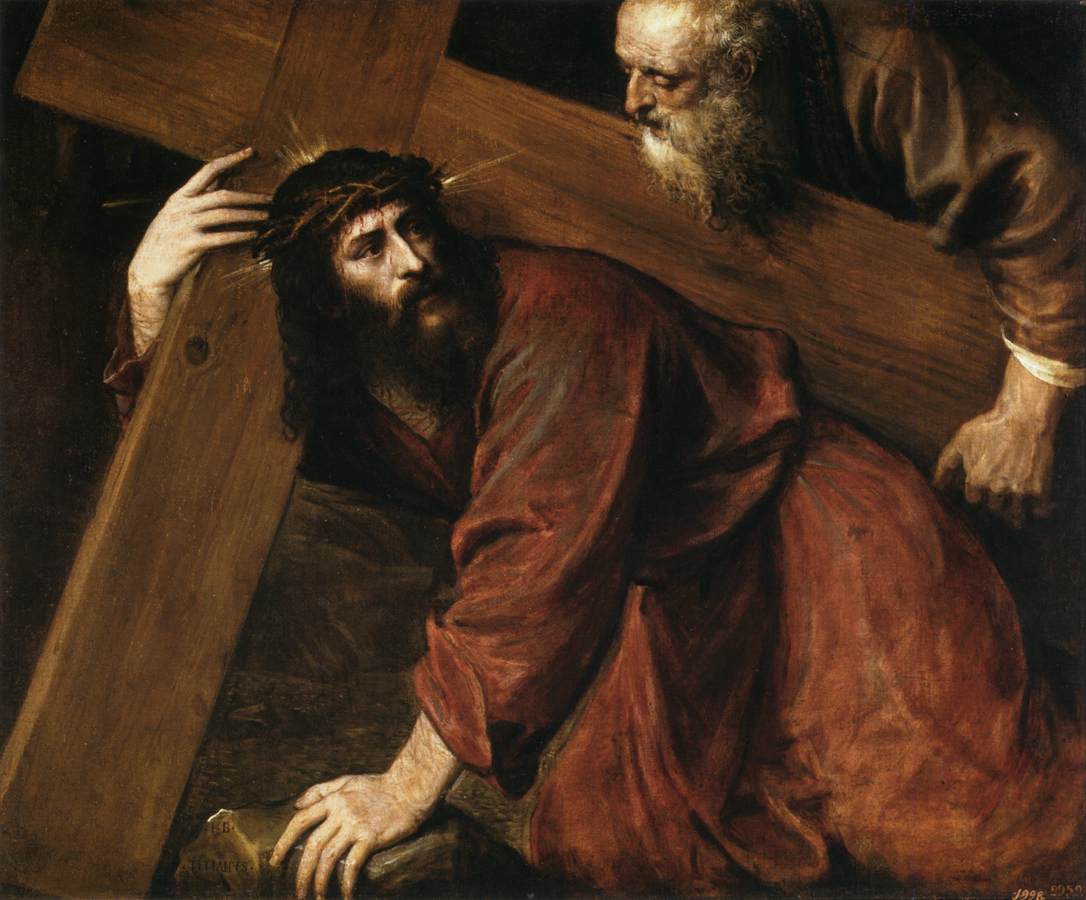
(Titian, 1560)
